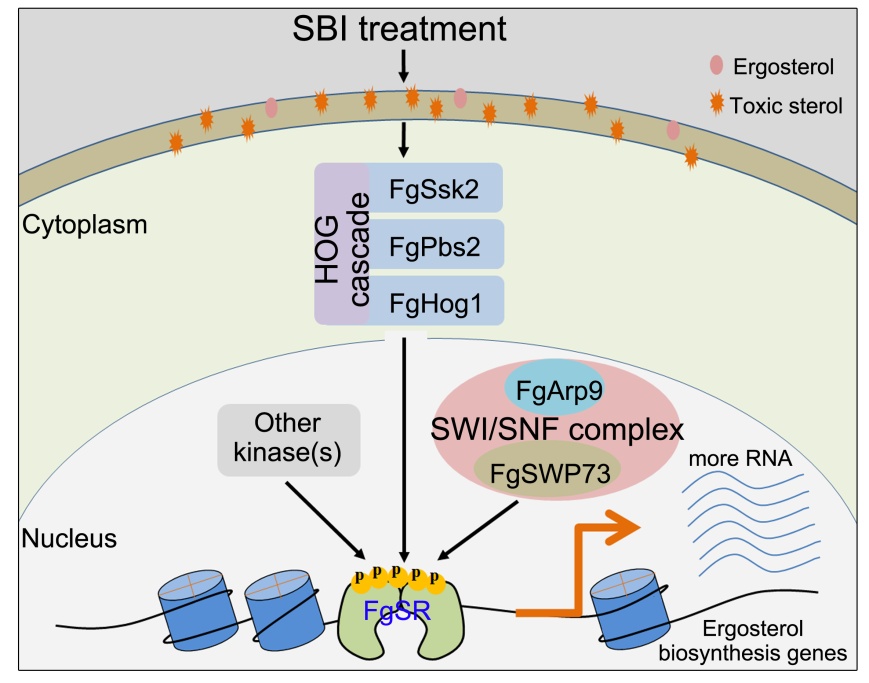Sterols are essential membrane lipid components, and modulate membrane fluidity, stability, permeability, aerobic metabolism, cell cycle, and the activities of membrane-bound enzymes in most eukaryotic organisms. Ergosterol is the major sterol of the fungal cells. When ergosterol synthesis is blocked, the structure and function of the membrane will be severely damaged, eventually leading to cell death. Therefore, dozens of ergosterol synthesis inhibitors (SBIs) have been successfully developed and widely used to control fungal diseases of human and plants. Fusarium graminearum is the major causal agent of Fusarium head blight (FHB), which is a devastating disease of cereal crops worldwide.
In recent years, due to climate change, large-scale wheat-corn rotation and straw returning, the FHB has been aggravated in China, which seriously affects the yield of wheat production. In addition, mycotoxins deoxynivalenol (DON) and its derivatives, produced by F. graminearum in infested grains, represent a serious threat to human and animal health. Application of fungicides in the early flowering stage is still an important strategy for the FHB control since highly resistant wheat cultivars are not available. SBI fungicides such as tebuconazole and prothioconazole have shown good efficacy in the control of FHB control. However, under the pressure of drug selection, this fungal pathogen is easily to develop drug tolerance to SBI agents, which in turn affects the efficiency of SBI fungicides.
Prof. Ma Zhonghua and his colleagues have found that SBI induces the transcription of FgCYP51 genes, which leads to tolerance of F. graminearum to SBIs. Further study shows that SBI activates the HOG pathway that phosphorylates FgSR. The phosphorylated FgSR subsequently recruits chromatin remodeling complex to the FgCYP51 promoter leading to up-regulation of FgCYP transcription. Interestingly, FgSR orthologs exist only in Sordariomycetes and Leotiomycetes fungi, indicating that the FgSR could be a potential drug target for the management of fungal pathogen. These results provide novel insight for ergosterol biosynthesis regulation.
The first author of the paper is Postdoct Liu Zunyong. Prof. Ma Zhonghua and Prof. Yin Yanni are the co-corresponding authors. This research was supported by the National Natural Science Fund for Distinguished Young Scholar, the National Key R&D Program of China, China Agriculture Research System.
The link: https://www.nature.com/articles/s41467-019-09145-6

A proposed model for the regulation of sterol biosynthesis mediated by FgSR in F. graminearum.